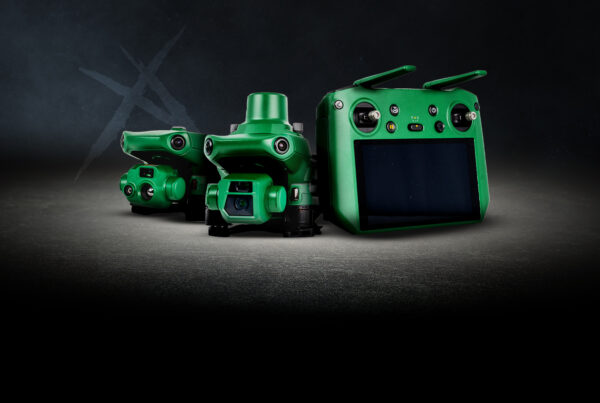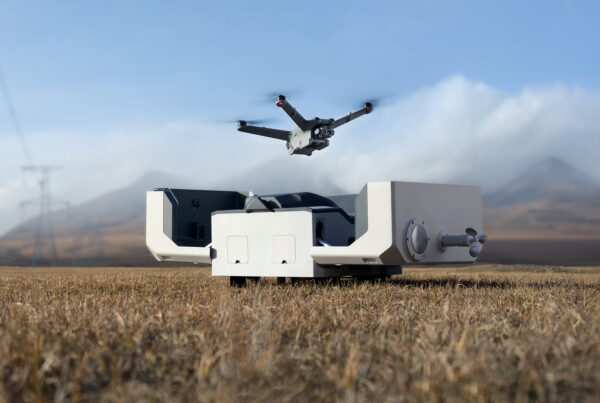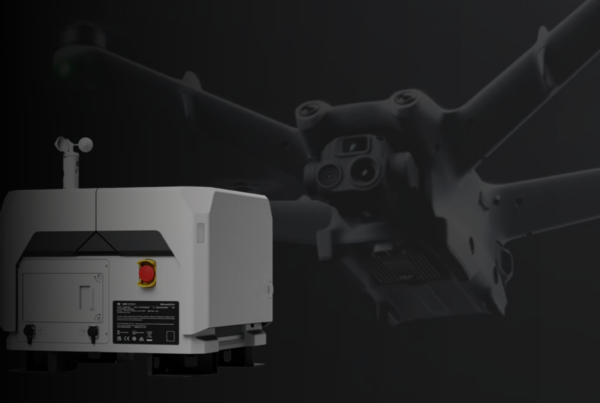Currently, most regulations require operators to have a constant line of sight on the drone whenever they are in operation—this is known as maintaining Visual Line Of Sight (VLOS). However, more countries are amending their regulations to allow for longer and further flights; as autonomous flight benefits are becoming widely acknowledged and accepted, the opportunity for BVLOS operations increases exponentially. In cases like aerial security rounds or routine maintenance checks, such flights would require the drones to go well Beyond Visual Line of Sight (BVLOS) of their operators. BVLOS technology allows drones to fly beyond human control or interference, supporting long-range, automated tasks. This is facilitated by data provided by onboard instruments that guide and control them, like telemetry links that supply all the information to the operator regarding location, altitude, speed, and direction of flight.
BVLOS drones allow for many applications in the infrastructure and inventory sectors, allowing for long-range inspections without the need for minute human oversight. They can be programmed to fly along a set pattern or path at a set speed, allowing them to collect data on objects or items along the path. This saves a lot of time, cost, and effort. By reducing the amount of time spent on manual ground inspections and the need for human intervention, BVLOS systems help organizations cut down on operational costs significantly.
So what technology exists to support BVLOS operations?
Drone docking stations serve as essential hardware enabling drones to perform take-offs and landings while facilitating recharging between flights. These stations function as miniature bases for drones, offering features such as storage, carry space, and protection from elements like rain, theft, or damage. They also provide a centralized hub for downloading and processing gathered data, including flight logs and images, enhancing efficiency and organization in drone missions.
DJI has two excellent solutions, the DJI Dock, and the DJI Dock 2, both of which support changing batteries and even perform pre-programmed missions. Drone docking stations like DJI Docks and Hextronics Global Advanced enable automated battery swapping, ensuring continuous drone operations. DJI Docks house Matrice 30 drones, offering cloud control and fast charging and Hextronics Global features a weatherproof design, rapid refueling in under 5 minutes, and cloud connectivity. The Hextronics Atlas 300 supports the DJI Matrice 300 with eight batteries and minimal downtime.
What are the benefits of docking stations?
Docking stations are “set-it-and-forget-it” solutions that allow organizations to maintain continuous operations with minimal maintenance. They are stationary systems that require installation at a specific location; as long as they are connected to a proper power source, they reduce the time and labor that is required to take the drone back to the home base to process data or recharge it. Docking stations once automated require little human oversight to function, charging the drone, and performing tasks as programmed, as well as adapting to issues based on the software and hardware paired with them. Recharging can also be automated which means the process works like clockwork to ensure optimum charging whenever required.
Additionally, docking stations provide high mobility for the drone as they serve as mobile stations; this means that missions can be executed regardless of location with minimal reconfiguration.
One of the major benefits of automated docking stations is that they allow 24/7 operations even when manual shifts end; once programmed, docking stations will perform missions, charge, process data and repeat the cycle throughout the night for as long as configured. When used for oil and gas pipeline inspections, anomalies, like leaks in a pipeline, can be found as early as possible and addressed so that damage from such leaks is minimal. Without such an automated system, a pipeline leak may not be found for hours to several days, threatening local ecosystems, risking pollution for local populations, and costing thousands to millions in infrastructure damage and potential fines.
A line of docking stations can allow drones to quickly cover large areas that a crew would take much longer to do. When configured to charge and fly at designated times, stations can work with minimal oversight allowing them to conduct tasks even at the night shift. This also makes sure they do not clash with regular operations. Such an automated chain can help with inspecting large structures such as pipelines or industrial sites, finding defects quickly, reducing bottom lines significantly. The rapidity of drone inspections results in less downtime, allowing for proper analysis and course of action.
Interested in learning about how BVLOS solutions could benefit your organization? Connect with our experts today.




